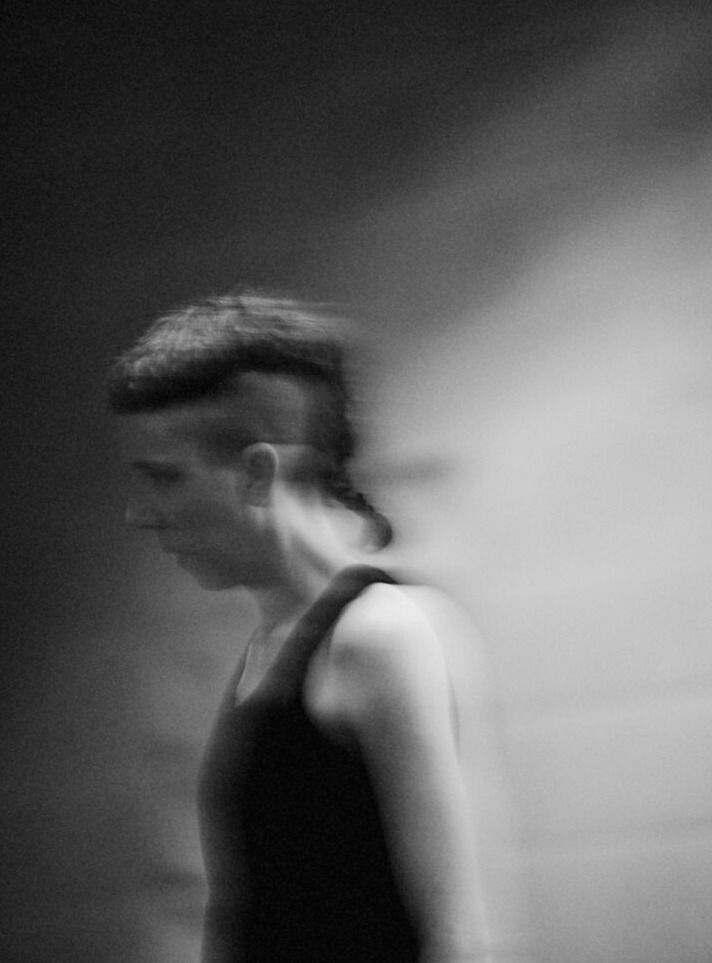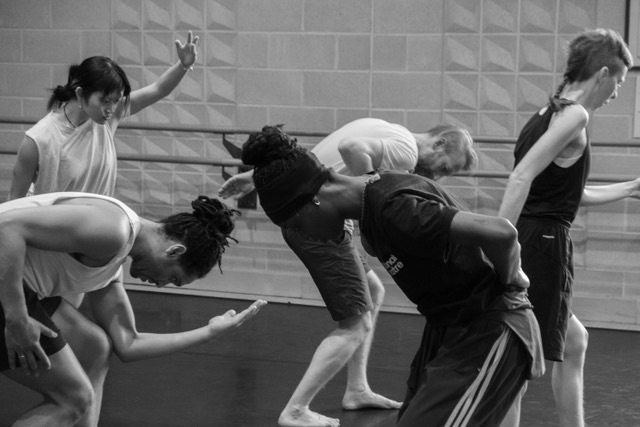Words by Maxine Flasher-Duzgunes. As. part of Dance Reflections by Van Cleef & Arpels
Ahead of their premiere this Thursday, March 27 at Sadler’s Wells East, we spoke with choreographer Jules Cunningham and producer Kat Bridge of Julie Cunningham & Company on the reimagining of a decades-old performance between Julius Eastman and Pauline Oliveros in New York, entitled CROW, and a contrasting piece, entitled Pigeons, that highlights the journey of the ever-present birds.
Maxine: How did you originally come across the work of Julius Eastman and Pauline Oliveros?
Jules: I came across their work at a particular time in lockdown. I heard Julius Eastman on Radio 3 I think, while going on walks and seeing other living things around, including pigeons. Once I found out about his work, I started to hear about it from other people and in other places. And Pauline Oliveros I had heard about over a long time, and actually, I realized that she’d made some music for Merce Cunningham in the 1970s and again, it was just through people that I knew and worked with.
Maxine: What has been your experience developing work at the Bethlem Gallery and how have you engaged with their community?
Jules: I got to know the Bethlem Gallery a bit more in 2021 when I was in Bethlem Hospital and I’ve been sort of building a relationship with them. They support people with mental health conditions, or people at various stages in their mental health, who are doing some kind of art or making practice.
Kat: Jules had been awarded an acknowledgement of artistic practice for their visual artwork called the Founders Award in 2022, so there’s been a dialogue with the team at Bethlehem since that point. In February 2024 during LGBTQ history month, we did a residency there while we were making Pigeons.
Jules: We did a number of workshops with people who are residents at the hospital in different wards, so connecting with people with where they were at; I feel like that added a big layer to what Pigeons became.
Kat: We also spent quite a lot of time there as a company last summer, August 2024, doing some similar things, but also quite a lot of research for CROW with the tasks that Pauline Oliveros had detailed and outlined as part of her practice, both in the studio space at the gallery, which is like an art studio, but also across the grounds.
Jules: We were there as an “open studio”, so it was more like a public open space where we held some movement sessions and some listening and drawing sessions around mark-making. It was a different experience for us to have, more like a visual arts space where we could create, put things on the wall, keep adapting to what was needed on each day.
Kat: As part of that space, we could accumulate artwork that either the company made or all the different visitors and participants made. We also had books about Pauline Oliveros and books about Merce Cunningham, and had some physical prop-type materials from Firebird, which was the solo that Jules made just prior to lockdown and that we hope to make a film of later in the year. That gallery space was open to the public from Wednesday to Saturday, and on Saturday, we did a big workshop that resulted in making a performance score, which people performed at the end of that session. The other thing to add is about Jules’ participation in the gallery’s art group…
Jules: Yes, the group is one of the most regular things that I’ve done; I go on Wednesdays to an open session, just like a regular group of people who go each week, and we catch up and work on what we’re working on, and talk about what we’re working on. And there’s a bunch of people from that group who I’ve been doing mini performance evenings with, because a lot of them make music or poetry or movement. It started last spring when there was an artist called The Artist Taxi Driver, Mark McGowan, who had an exhibition/live show at the gallery called Bethlem Live Lounge and he was setting up performance happenings. We started to do some performances in different places, like galleries, and we did one at a record shop in Camberwell and a bookshop in Dulwich, so it was like a local touring situation we got going on.

Maxine: When I lived in London, my roommate from the Netherlands was getting his PhD in ornithology (specifically pigeon behavior) – what about their behavior do you find relates to movement and choreography?
Jules: I just really enjoy watching them. I enjoy watching how they move together, how they seem to be often together in a group, but alone at the same time. I’ve been making a lot of short videos of pigeon scenes that I see each day, and I feel like there’s always something quite dramatic about what’s happening between them, other than just going about their day.
Maxine: Compared to pigeons, how do you as an artist associate with the crow?
Jules: Well, pigeons in London are very present, constantly present, and then crows are a bit less present, and you don’t see a lot of them together as often as you do pigeons. You might see like two or three in the same place, but they’re quite solitary, and they’re a bit less comfortable with humans, so you can’t get as close to them. They’re more mysterious and sort of solitary characters.
Maxine: Do you think marginalised people will always be outsiders?
Jules: Everyone has the experience of being on the outside at some point or feeling like they don’t fit in. I think it’s quite hard, once you’ve felt that, to ever feel like you fit. But I don’t think that pigeons worry if they fit in, really. I guess it depends what you want, like, do you want to fit in? I think maybe it’s more about belonging. I think people want to belong. You want to find people where you feel like you belong. But then, it depends on what your orientation is around that and where you find you belong, because I’m not interested whatsoever in fitting into mainstream or fitting in really, but I think belonging is more important, and that’s more personal, and about finding people you can connect with, rather than assimilating into normativity.
Maxine: What are some ways the dance community can become more accessible towards marginalised people, specifically queer, disabled, and people of the global majority?
Jules: I think that one of the best things about working with the Bethlem Gallery is about meeting people where they are – that makes a difference. I feel like going into the theatre is intimidating, is expensive, it takes a lot of energy, and I don’t think that those things are necessarily accessible.
Kat: So as a company, it’s been so rewarding to be working in different contexts, particularly at Bethlem: everybody who’s worked with us has gotten so much out of that, and I think we’re really committed to the work living just as much in spaces outside the theatre and outside the dance space as we are in it.
Maxine: What physical, scenic, and sonic elements sets Pigeons apart from CROW?
Jules: As dances, they’re very different. They both have a big structure, but I think Pigeons is more tight as a structure. It’s very dense in terms of the movement material, sort of relentless, and non-stop. It’s also like a particular journey; going through it is like a small lifetime.
Kat: Yes, the drama of the pigeons is seemingly mundane, but actually quite dramatic. One of the things that we’ve noticed while doing the work is that it’s this strong articulation, this layered, highly structured improvisation where there’s a lot of dancer choice. The end section is more about remembering or kind of revisiting, and is much more spacious, but it’s very hard to do that bit without running the work from the beginning, the quality of it only can really come once you’ve been through the run. For Pigeons, we have an empty stage with beautiful lighting by Joshie Harriette, whereas CROW is quite a different feel.
CROW is more about the collaborative elements coming together, the movement being part of that. In the making of it, I try to hold back, not pile it on and make it too dense, because I know that there are other things to be with, like the sound and video projection is its own spatial element. The sound is by JD Samson, who’s joined us this week from New York and will be playing and mixing the sound live. We’ve also been working with Julie Verhoeven on the set and costume design, who is an artist in different mediums but comes more from a fashion background, and who we met whilst doing a workshop for Bethlem. The world of CROW is a bit of a journey of understanding, of how these different aesthetics might work together.
Kat: It was inspired by this performance between Julius Eastman and Pauline Oliveros 50 years ago, for which there is no record, only a brief description, and that kind of energy of collaborating and improvising has become the sort of crux. We’re not trying to recreate what we think that performance was, but what this layered collaboration or coming together of different things might be now.
To learn more about Jules’ work, visit https://bethlemgallery.com/artists/jules-cunningham/
Dancers: Harry Alexander, Nafisah Baba, Yu-Chien Cheng, Jules Cunningham, Matthias Sperling. Header image by Dolly Brown.
